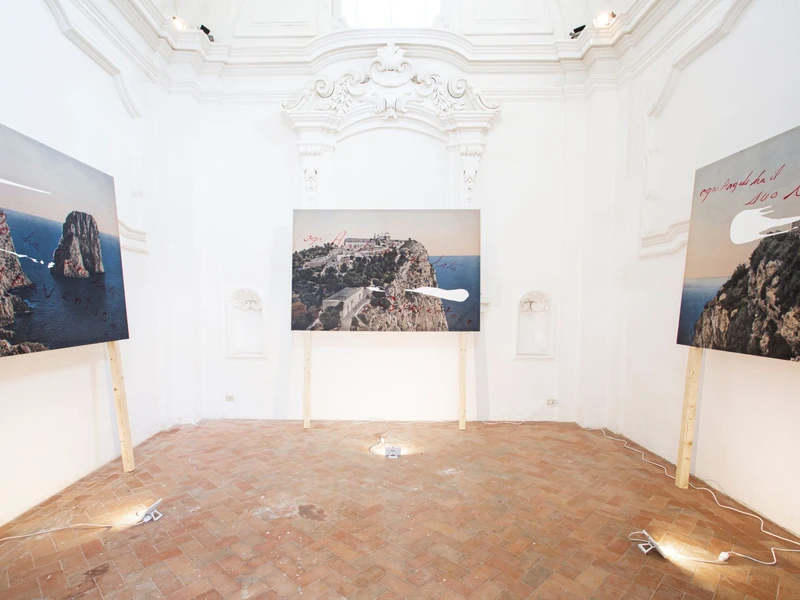Julian Schnabel: Ogni Angelo ha il suo Lato Spaventoso
6 Jul-30 Sep 2022


Marco Voena and Cy Schnabel are pleased to present Ogni Angelo Ha Il Suo Lato Spaventoso at La Certosa di San Giacomo in Capri, which will run from 6 July until 30 September 2022. The installation will comprise of a selection from Julian Schnabel’s Capri Paintings series. This is the first time these works will be shown on the island of Capri, which served as their initial inspiration.
Starting in the early 2000s, Schnabel began making different series that explore the use of digitally printed imagery in conversation with his extensive vocabulary of mark-making and painted shapes. With the Capri Paintings, Schnabel has digitally printed on large-scale images from old postcards of Capri featuring emblematic architectural sites and natural features around the island: the ruins at Villa Jovis, the Grotta Azzurra, the Faraglioni rocks. Perhaps they are an homage to the historical value and sublime beauty inherent to the island. The succinct white marks executed with gesso, a reoccurring trait of the artist’s oeuvre, reappear in the four paintings on view. What the viewer encounters are fleeting forms that symbolize our transient nature as human beings. A blink of an eye in the history of mankind.
— Cy Schnabel
Johann Wolfgang von Goethe used the image of rocks jetting out of the water as a metaphor of eternity. Indeed, it perfectly describes that strange feeling, a mixture of belonging and estrangement, that northern travelers between the eighteenth and nineteenth centuries felt in front of the dazzling cliffs of Capri. They are rugged, majestic peaks that rise from sometimes emerald waters, but more often waters that are dark and impenetrable depths akin to metal or liquid obsidian. Eternity is the key. Every paradise, even the sunniest, has a dark, opaque side. This series of works by Julian Schnabel, created on the island between 2008 and 2009, recounts the island’s most restless and mysterious sides. They recall the fiery landscapes of Caspar David Friedrich, the mystical and silent symbolism of Arnold Böcklin's Isle of the Dead, the dark and visionary canvases of Karl Wilhem Diefenbach—even certain dense and suspended aspects of Werner Herzog's cinema. The cathartic breakthrough lies in the candid brushstrokes that illuminate, like glimpses of light, a landscape bathed in a palette of brass and leaden grays. A wintry and distant dimension, Nordic and full of foreboding.
— Marco Voena